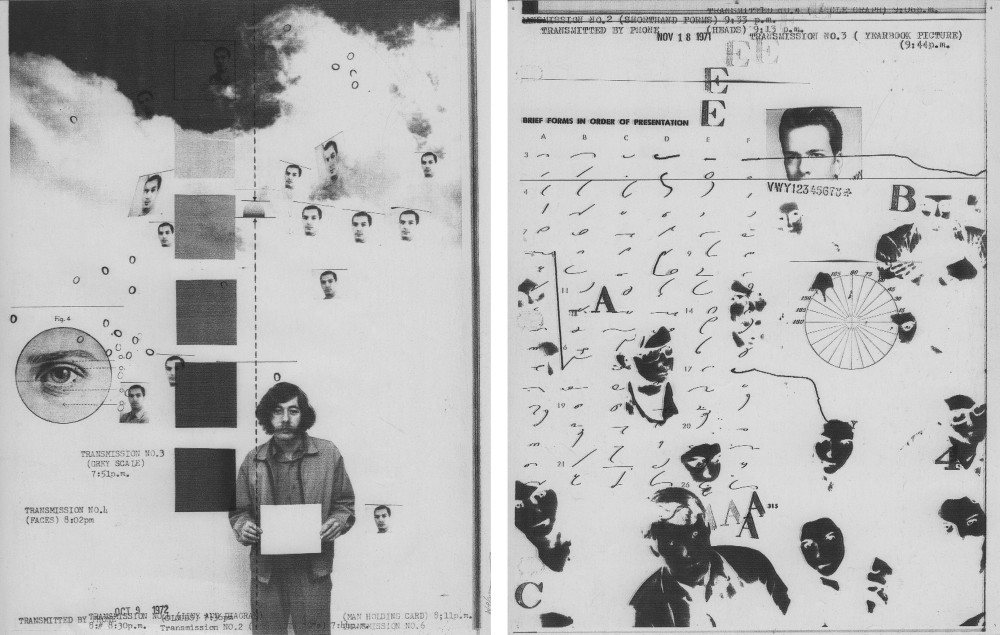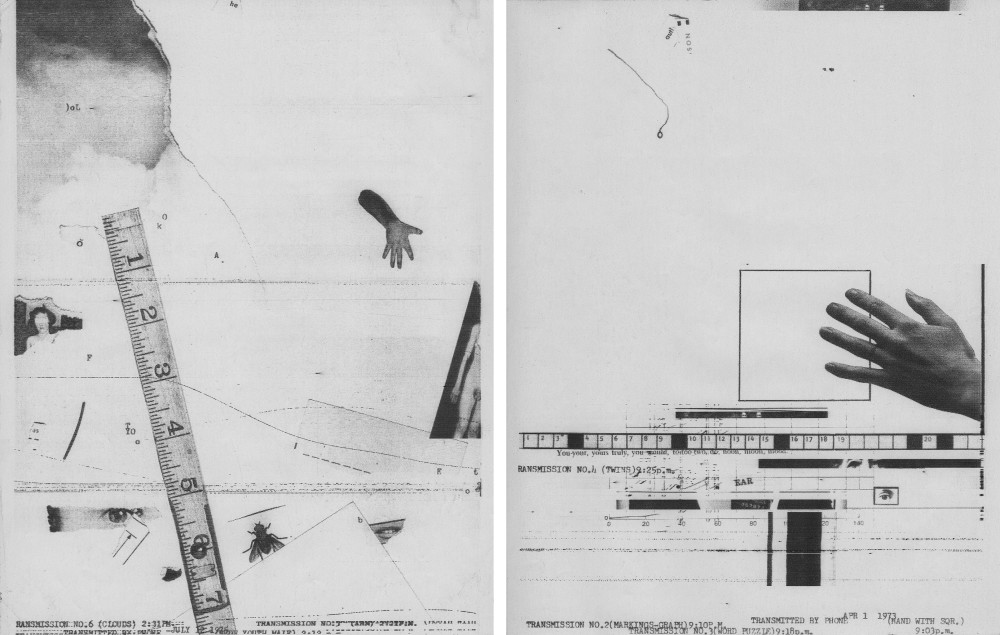Image above: ©William Larson (left) Untitled, Fireflies series, 1969-78; (right) Untitled, Fireflies series, 1969-78. Courtesy Gitterman Gallery.
Gitterman Gallery presented Fireflies series by William Larson. The exhibition opened on Wednesday, April 29th with a reception for the artist and will run through Thursday, July 2nd.
William Larson's Fireflies series (1969–1978) were some of the earliest digitally generated works of art. Larson utilized a technology new to the time to present a dynamic way of image making that extended the vocabulary of montage.
 ©William Larson (left) Untitled, Fireflies series, October 9, 1972; (right)Untitled, Fireflies series, November 18, 1971. Courtesy Gitterman Gallery.
©William Larson (left) Untitled, Fireflies series, October 9, 1972; (right)Untitled, Fireflies series, November 18, 1971. Courtesy Gitterman Gallery.
Larson used a Graphic Sciences DEX 1 Teleprinter, a sophisticated early fax machine, which converted pictures, text and sound into digitally-generated audio signals. These signals were transmitted over a telephone line and a stylus burned the image onto a special carbon-based paper, creating a unique “electronic drawing.” He was able to manipulate these images by altering the voltage of the output during the printing process, by moving the stylus during printing and by sending multiple transmissions to the same page, electronically layering images, text and visual representations of sound.
Larson conducted the technology to produce an almost random juxtaposition of dissimilar images. The symbolic, or poetic, potential of the juxtaposition references "the imperfect operations of memory or dreams."

©William Larson (left) Untitled, Fireflies series, July 12, 1975; (right) Untitled, Fireflies series, 1969-78. Courtesy Gitterman Gallery.
With Fireflies, Larson sought to move beyond the traditional notion of what a photograph can be. He was interested in representing the fluidity of time with a static work of art. He stated: “I started to work and think of photography as a system of production, supporting a bias toward the additive possibilities of the medium, and less the subtractive, descriptive, or literal.”


